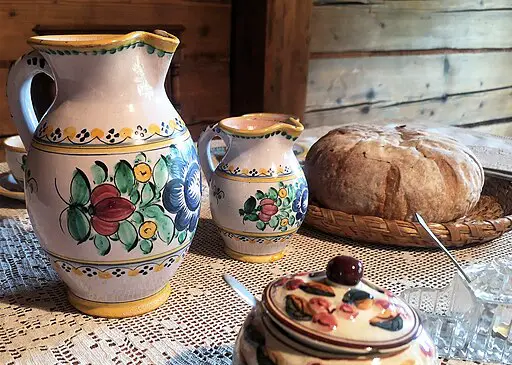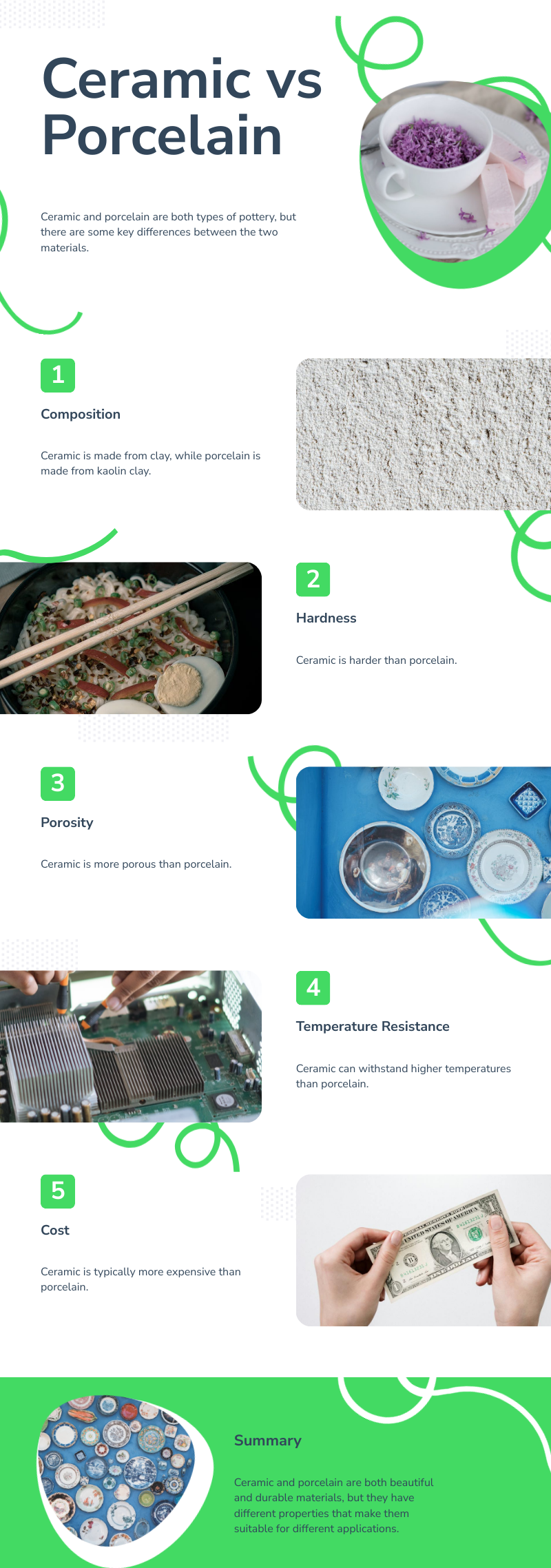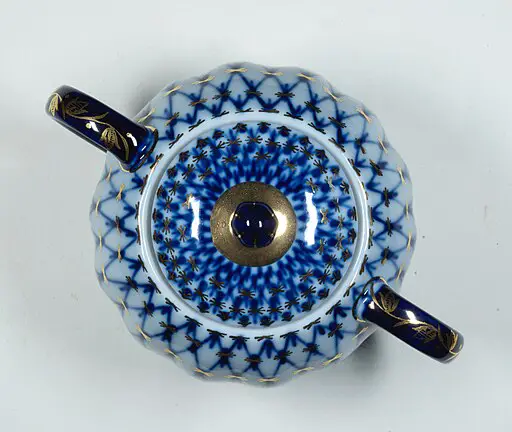Ceramic is a broad term for various clay-based products, while porcelain is a specific type of ceramic made with fine-grained clay fired at high temperatures.
Did you know that ceramic and porcelain tiles are often mistaken for each other, despite having significant differences? These two popular tile options may seem similar at first glance, but understanding their unique properties is crucial for making the right choice for your next home improvement project.
In this article, we’ll explore the key differences between ceramic and porcelain tiles, including their durability, appearance, cost, and best uses. By the end, you’ll have a clear understanding of which option is best suited for your specific needs and design preferences.
Key Takeaways:
- Porcelain tiles are denser, more durable, and practically water-resistant due to being fired at higher temperatures.
- Ceramic tiles tend to be more delicate and absorb water easily.
- Porcelain tiles have the design carried through the entire body, making chips less noticeable, while ceramic tiles have printed designs on the surface.
- Porcelain tiles are more expensive than ceramic tiles due to their higher density.
- Ceramic tiles are ideal for areas with low traffic, accent walls, and kitchen backsplashes, while porcelain tiles are more suitable for higher traffic areas, exterior walls, countertops, and flooring.
Manufacturing Process of Ceramic and Porcelain Tiles
When it comes to the production of ceramic and porcelain tiles, there are distinct differences in the manufacturing processes that result in unique properties and characteristics for each type of tile.
Ceramic Manufacturing Process

Ceramic tiles are produced by mixing clay with minerals and water to form a homogeneous mixture. This mixture is then shaped into tiles and fired at lower temperatures in a kiln. The firing process helps to remove moisture and bind the clay particles together, creating a solid and durable tile.
Porcelain Manufacturing Process

On the other hand, porcelain tiles are made from a mixture of white clay, feldspar, and sand. The mixture is finely ground and then compressed under high pressure to form tile shapes. These compressed tiles are fired at much higher temperatures than ceramic tiles. The high firing temperature results in a denser and stronger tile with a lower water absorption rate.
| Ceramic Tiles | Porcelain Tiles | |
|---|---|---|
| Firing Temperature | Lower | Higher |
| Tile Density | Lower | Higher |
| Water Absorption Rate | Higher | Lower |
The higher firing temperature of porcelain tiles contributes to their enhanced durability and resistance to moisture. Porcelain tiles are less porous and more suitable for areas with high humidity, such as bathrooms and kitchens. Ceramic tiles, while less dense and more absorbent, are still a popular choice for various applications.
Understanding the manufacturing processes of ceramic and porcelain tiles can help you make an informed decision when selecting the right type of tile for your project.
Appearance of Ceramic and Porcelain Tiles
Both ceramic and porcelain tiles offer a wide range of colors and patterns, allowing you to create the perfect look for your space. However, there are some key differences in their appearance.
Ceramic Tile Appearance
Ceramic tiles have printed designs on the surface, which gives them a vibrant and decorative appearance. The design is applied to the top layer of the tile, creating an array of colors and patterns to choose from. This allows for endless design possibilities, making ceramic tiles a versatile option for any style or theme.
Porcelain Tile Appearance
Porcelain tiles, on the other hand, have the color and design carried through the entire body of the tile. This means that even if the tile chips, the color underneath remains the same, making the chips less noticeable. The design is not just on the surface, but throughout the entire tile, creating a unified and seamless look.
To help you visualize the range of colors and patterns available, here is a table showcasing different options for both ceramic and porcelain tiles:
| Ceramic Tiles | Porcelain Tiles | |
|---|---|---|
| Colors | Wide range of vibrant colors | Wide range of vibrant colors |
| Patterns | Printed designs on the surface | Printed designs throughout the entire tile |
As you can see, both ceramic and porcelain tiles offer a variety of options when it comes to colors and patterns. The choice between the two will depend on your personal preference and the overall aesthetic you want to achieve in your space.
Cost Comparison of Ceramic and Porcelain Tiles
When choosing tiles, cost is a crucial factor. Porcelain tiles, known for their strength and water-resistance, are pricier due to their durability. However, their long-term value may justify the initial expense. Conversely, ceramic tiles are more affordable and suitable for budget-conscious projects. While less durable than porcelain, they offer functionality and aesthetics for low-traffic areas.
Porcelain tiles are costlier but offer superior durability, while ceramic tiles are more budget-friendly and suitable for areas with less foot traffic. Understanding these cost differences helps in selecting the right tiles for various projects and budgets.
To give you a better idea of the cost comparison between ceramic and porcelain tiles, here’s a brief breakdown:
| Tile Type | Average Cost per Square Foot |
|---|---|
| Ceramic | $2 – $8 |
| Porcelain | $5 – $10 |
Please note that these price ranges are approximate and can vary depending on factors such as tile size, design, brand, and location. It’s recommended to consult with local suppliers or contractors to get accurate pricing information for your specific project.
Ultimately, the decision between ceramic and porcelain tiles should consider your budget, desired aesthetics, and the intended use of the tiles. Both options offer their own set of advantages and cost considerations, allowing you to find the perfect tile for your project.

Best Uses of Ceramic and Porcelain Tiles
When it comes to choosing the right tile for your project, understanding the best uses of ceramic and porcelain tiles is essential. Let’s explore where each type of tile shines.
Ceramic Tiles
Ceramic tiles are perfect for areas with low traffic, adding a touch of style and creativity to your space. Here are some popular uses for ceramic tiles:
- Accent walls: Create a focal point in your room by using ceramic tiles to create an eye-catching accent wall.
- Kitchen backsplashes: Protect your kitchen walls from splatters and spills while adding a beautiful design element.
- Bathroom walls: Bring color and texture to your bathroom by using ceramic tiles on the walls.
Porcelain Tiles
If you’re looking for durability and versatility, porcelain tiles are your best bet. Here are some ideal uses for porcelain tiles:
- Exterior walls: Porcelain tiles are highly resistant to extreme weather conditions, making them perfect for enhancing the exterior of your home or building.
- Countertops: Create a stunning and long-lasting countertop with porcelain tiles that can withstand daily use.
- Flooring: Whether indoors or outdoors, porcelain tiles are the go-to option for high-moisture areas and heavy foot traffic.
Now that you know the best uses for ceramic and porcelain tiles, you can confidently choose the right tile for your specific needs. Consider factors such as traffic, moisture levels, and aesthetic preferences to make an informed decision.
Benefits of Ceramic Tiles
Ceramic tiles offer numerous benefits that make them a popular choice for various applications. From affordability to durability, here are the advantages and properties of ceramic tiles:
- Affordability: Ceramic tiles are a cost-effective option compared to other flooring materials. They offer a budget-friendly solution without compromising on quality.
- Wide Range of Design Options: Ceramic tiles come in an extensive variety of colors, patterns, and textures. Whether you prefer a classic or contemporary look, there’s a ceramic tile design to suit your style.
- Easy Installation: Installing ceramic tiles is relatively simple and straightforward. They can be laid on various surfaces, including concrete and plywood, making them suitable for both new constructions and remodeling projects.
- Resistant to Stains and Scratches: Ceramic tiles have a protective glaze that makes them resistant to stains, spills, and scratches. This feature ensures that they maintain their appearance and durability over time.
Given their versatility and practicality, ceramic tiles are commonly used for:
- Interior walls
- Backsplashes
- Low-traffic floors
Now, let’s take a closer look at the benefits of porcelain tiles in the next section.
Benefits of Porcelain Tiles
Porcelain tiles offer numerous benefits that make them a popular choice for various applications. These tiles are known for their exceptional durability, low water absorption, and resistance to stains and scratches. Let’s explore the advantages of porcelain tiles in more detail:
- High Durability: Porcelain tiles are highly durable and can withstand heavy foot traffic, making them ideal for areas that experience a lot of activity. Whether it’s a busy hallway, a bustling kitchen, or an outdoor patio, porcelain tiles can handle the wear and tear of daily use.
- Low Water Absorption: Porcelain tiles have a low water absorption rate, which means they are virtually impervious to moisture. This property makes them excellent for use in areas prone to high humidity or moisture, such as bathrooms, kitchens, or outdoor spaces.
- Resistance to Stains and Scratches: Porcelain tiles are resistant to stains and scratches, making them easy to clean and maintain. This feature is particularly beneficial for areas where spills, dirt, and everyday accidents are common, ensuring that your porcelain tiles stay looking pristine for years to come.
With their exceptional properties, porcelain tiles are versatile and can be used both indoors and outdoors. They are commonly used for flooring, countertops, and exterior walls to create beautiful and durable surfaces that stand the test of time.
Cleaning and Maintenance of Ceramic and Porcelain Tiles
Proper cleaning and maintenance are essential for keeping ceramic and porcelain tiles looking their best. With the right care, you can ensure the longevity and beauty of your tile installations.
Cleaning Ceramic Tiles
To clean ceramic tiles, follow these simple steps:
- Sweep or vacuum the tiles to remove any loose dirt or debris.
- Fill a bucket with warm water and add a mild, pH-neutral cleaner designed for ceramic tiles.
- Dip a mop or sponge into the cleaning solution and thoroughly mop the tiles, making sure to reach all areas.
- Rinse the mop or sponge frequently to avoid spreading dirty water.
- Once the tiles are clean, rinse them with clean water to remove any remaining cleaner.
- Allow the tiles to air dry or dry them with a clean towel.
Cleaning Porcelain Tiles
Porcelain tiles are relatively low-maintenance and can be cleaned using similar methods as ceramic tiles. Here’s what you need to do:
- Start by sweeping or vacuuming the tiles to remove loose dirt and dust.
- Prepare a cleaning solution by diluting a pH-neutral, non-abrasive cleaner in warm water.
- Mop the tiles with the cleaning solution, ensuring all areas are covered.
- Rinse the mop regularly to avoid spreading dirt.
- Rinse the tiles with clean water to remove any residue from the cleaner.
- Dry the tiles using a clean, lint-free cloth or allow them to air dry.
Maintenance of Ceramic and Porcelain Tiles
Aside from regular cleaning, there are a few additional maintenance tips for ceramic and porcelain tiles:
- Avoid using abrasive cleaners or scrub brushes that can damage the tile surface.
- Wipe up spills immediately to prevent staining.
- Place felt pads on furniture legs to prevent scratching the tiles.
- Use doormats at entryways to reduce the amount of dirt and debris brought onto the tiles.
- Apply a sealant to the grout lines periodically to protect them from stains and moisture.
Following these cleaning and maintenance practices will help preserve the appearance and integrity of your ceramic and porcelain tiles, ensuring they look beautiful for years to come.
| Cleaning and Maintenance Tips | Ceramic Tiles | Porcelain Tiles |
|---|---|---|
| Regular Cleaning | Sweep, mop with mild cleaner | Sweep, mop with mild cleaner |
| Avoid Abrasive Cleaners | Yes | Yes |
| Stain Prevention | Wipe up spills immediately | Wipe up spills immediately |
| Scratch Prevention | Use felt pads under furniture legs | Use felt pads under furniture legs |
| Entrance Mats | Use doormats at entryways | Use doormats at entryways |
| Grout Sealing | Periodically apply sealant | Periodically apply sealant |
Choosing the Right Tile for Your Project
When it comes to selecting the perfect tile for your project, whether it’s for a bathroom renovation or a kitchen remodel, it’s important to consider a few key factors. By weighing these factors, you can make an informed decision between ceramic and porcelain tiles, ensuring that you choose the right tile for your specific needs.
Intended Use
One of the first things to consider is the intended use of the tile. Ceramic tiles are an excellent choice for interior walls, backsplashes, and low-traffic floors. They offer a wide range of design options, making it easy to find the perfect tile to complement your style. On the other hand, porcelain tiles are more durable and can be used both indoors and outdoors. This makes them ideal for high-traffic areas and areas with high moisture, such as bathrooms and entryways.
Style Preferences
Another important factor to consider is your style preferences. Both ceramic and porcelain tiles come in a variety of colors, patterns, and finishes. Ceramic tiles often have printed designs on the surface, which can add visual interest to your space. Porcelain tiles, on the other hand, have the design carried through the entire body of the tile, making chips less noticeable. This can be advantageous if you want a seamless and uniform look for your floors or walls.
Budget
Of course, budget is always a consideration when choosing any building material. Ceramic tiles are generally more affordable than porcelain tiles, making them a cost-effective option for larger projects or renovations on a budget. However, it’s important to keep in mind that porcelain tiles offer superior durability and longevity, which can make them a worthwhile investment in the long run.
Durability Requirements
Lastly, consider your durability requirements. If you’re looking for a tile that can withstand heavy foot traffic and resist chips, scratches, and stains, porcelain tiles are the way to go. They are known for their exceptional durability and resilience. On the other hand, if you’re working on a project with lower traffic areas, such as a decorative accent wall or a kitchen backsplash, ceramic tiles can be a suitable choice.
By carefully considering these factors—intended use, style preferences, budget, and durability requirements—you can confidently make the decision between ceramic and porcelain tiles that best suits your project. Remember to explore different options, consult with professionals, and ultimately choose the tile that aligns with your vision and practical needs.
Conclusion
After considering the key differences between ceramic and porcelain tiles, it is clear that each option has its own unique advantages and characteristics. Ceramic tiles are more budget-friendly and ideal for low-traffic areas such as accent walls and kitchen backsplashes. On the other hand, porcelain tiles offer superior durability and are suitable for a wide range of applications, including high-traffic areas, exterior walls, countertops, and flooring.
When deciding between ceramic and porcelain, it is important to carefully assess your specific needs and preferences. Consider factors such as your budget, the intended use of the tiles, and the level of durability required for your project. By taking these aspects into account, you can make an informed decision and choose the tile option that best suits your requirements.
FAQ
What’s the difference between ceramic and porcelain?
Ceramic tiles are more delicate and absorb water easily, while porcelain tiles are denser, more durable, and practically water-resistant due to being fired at higher temperatures. Porcelain tiles also have the design carried through the entire body, making chips less noticeable, whereas ceramic tiles have printed designs on the surface. Porcelain tiles are generally more expensive than ceramic tiles.
What are the benefits of ceramic tiles?
Ceramic tiles are affordable, come in a wide range of design options, and are resistant to stains and scratches. They are a popular choice for interior walls, backsplashes, and low-traffic floors.
What are the benefits of porcelain tiles?
Porcelain tiles are highly durable, have a low water absorption rate, and are resistant to stains and scratches. They are suitable for high-traffic areas and can be used both indoors and outdoors. Common applications include flooring, countertops, and exterior walls.
What is the manufacturing process of ceramic and porcelain tiles?
Ceramic tiles are made by mixing clay with minerals and water and firing them at lower temperatures. Porcelain tiles, on the other hand, are made from a mixture of white clay, feldspar, and sand, which is fired at higher temperatures. The higher firing temperature makes porcelain tiles denser and stronger than ceramic tiles.
How do ceramic and porcelain tiles differ in appearance?
Both ceramic and porcelain tiles are available in a wide range of colors and patterns. The color and design of porcelain tiles are carried through the entire body, making chips less noticeable. Ceramic tiles have printed designs on the surface, which can make chips more noticeable as the body of the tile is a different color than the surface.
Which is more expensive, ceramic or porcelain tiles?
Porcelain tiles are generally more expensive than ceramic tiles due to their higher density and durability.
Where are ceramic tiles commonly used?
Ceramic tiles are great for areas with low traffic, such as accent walls and kitchen backsplashes.
Where are porcelain tiles commonly used?
Porcelain tiles are more durable and suitable for areas with high moisture and heavy foot traffic. They can be used for exterior walls, countertops, and even as flooring indoors and outdoors.
How do you clean and maintain ceramic and porcelain tiles?
Both ceramic and porcelain tiles are easy to clean and maintain. Regular sweeping, mopping, and mild cleaning solutions are usually sufficient to keep them in good condition. Consult the manufacturer’s recommendations for specific cleaning and maintenance instructions.
What factors should I consider when choosing between ceramic and porcelain tiles?
When choosing between ceramic and porcelain tiles, consider factors such as the intended use, style preferences, budget, and durability requirements.
Which tile is better for my project, ceramic or porcelain?
The choice between ceramic and porcelain tiles depends on your specific needs and preferences. Ceramic tiles are more affordable and suitable for low-traffic areas, while porcelain tiles are more durable and suitable for a wide range of applications.
Image Credits
Featured Image By – Hannes Grobe, CC BY 4.0, via Wikimedia Commons
Image 1 By – Silar, CC BY-SA 4.0, via Wikimedia Commons
Image 2 By – Ohio University Libraries, Public domain, via Wikimedia Commons








